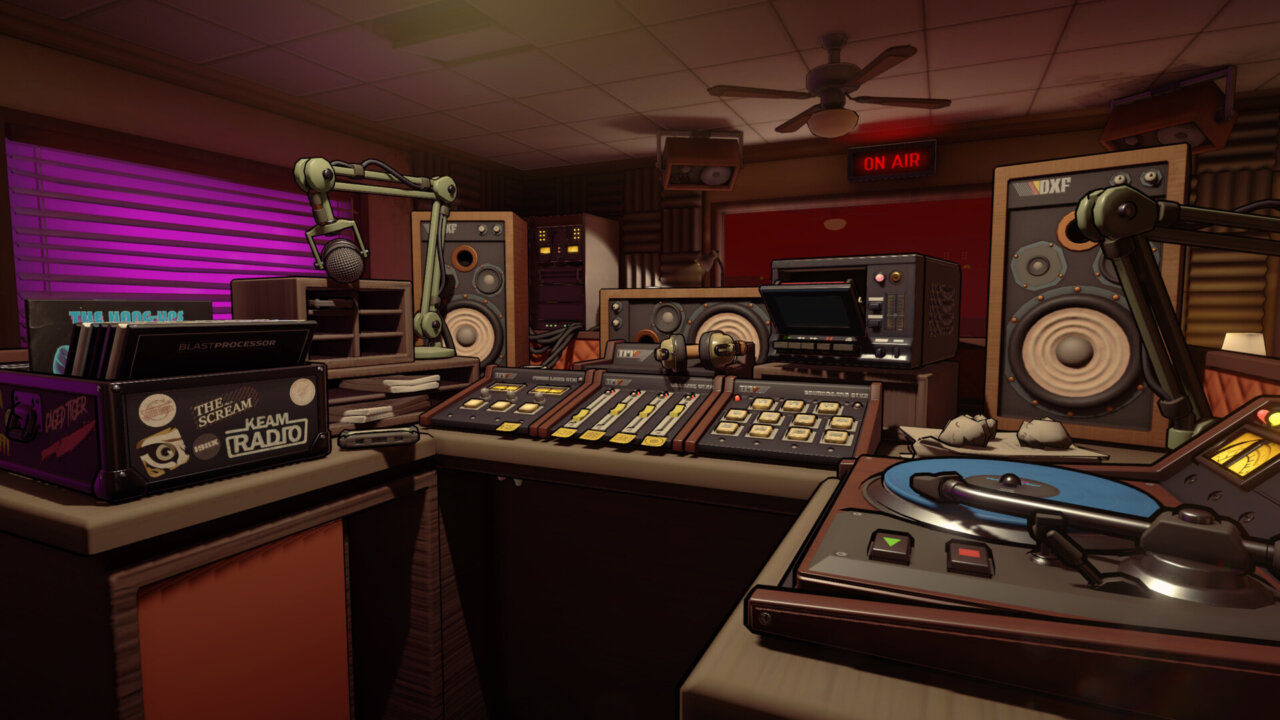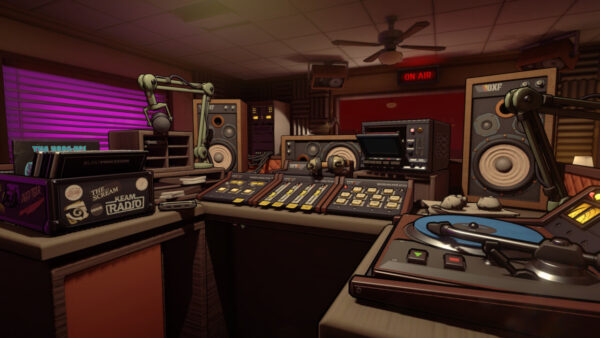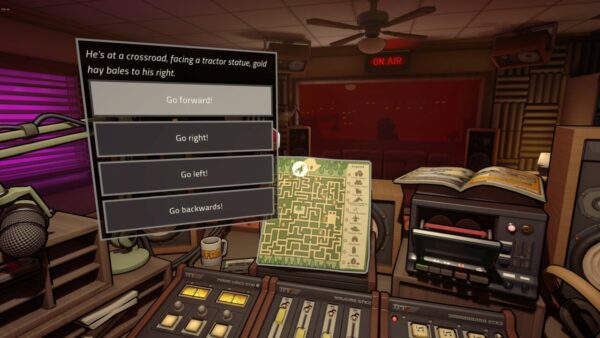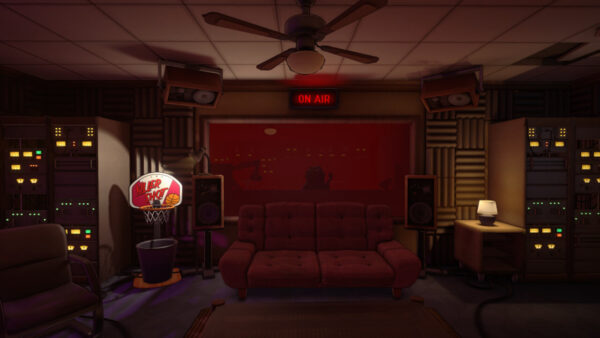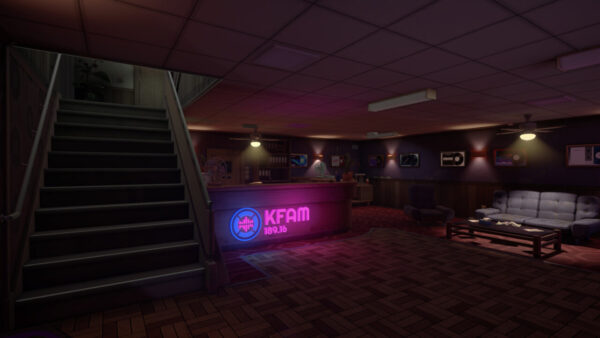Also on: PC, PS5, Xbox Series X, Xbox One
Publisher: Team17
Developer: Team17
Medium: Digital/Disc/Cartridge
Players: 1
Online: No
ESRB: T
I’m of two minds on Killer Frequency.
On the one hand, I definitely enjoyed it as I was playing it. I basically played through it all the way through in one sitting, and it takes about 4-5 hours to finish, which shows how into it I was. While you’re playing it, it seems like a tense thriller where you never really know what’s going to happen next – which is undoubtedly the point, since the plot is that you’re a late-night radio host in a small town where a serial killer has seemingly come back from the dead, the 9-1-1 dispatcher has routed calls to your radio station (it makes sense in-story), and you have to help people stay alive as they call in.
That said, as soon as I finished Killer Frequency, I couldn’t help but notice the details that didn’t really make sense if you thought about them for even a moment. Most glaringly, there’s the fact that the game takes place in the mid-’80s – there’s even a calendar in the booth with you that gives you the exact date, along with plenty of other cultural cues – except it feels like at least half the people calling in are doing so from cell phones. There’s no reason why Killer Frequency has to be set in the ‘80s (apart from the many, many homages to that decade’s slasher films), so to have such a glaring anachronism as the focal point of the game is kind of weird.
There’s also the fact that your actions matter – which is why it’s so fun while you’re playing – except at the same time, your character, a DJ named Forrest Nash, is able to get away with making some pretty horrifically inappropriate (albeit kind of hilarious) jokes, and none of the townsfolk seem to mind. Admittedly, as the player you have the choice of simply not saying those things, but again, given that the game takes pains to give you control over whether people live or die, it’s a little weird you can hear a caller get killed in a trash compactor, then make a joke about feeling as crushed by the death as the now-dead caller was, before happily throwing it over to a song, and no one ever bats an eye. I know that it’s a small town (as they note at the beginning, your show has about 35 listeners in a town of less than 1,000 people), but you’d think that callers might be a little less trusting of a guy who’s so blithely heartless about hearing people murdered on air.
In all honesty, however, those are minor nitpicks, since, as I said up top, I got really into Killer Frequency. To some extent, this is because the story and the premise are so engaging: the entire game takes place on the premises of the radio station, and your only connections to the outside world (save for a very brief, creepy foray into the alley behind the station) are the phone calls you receive throughout the night. You never know what the game will throw at you next, and the way it’s able to fill the station building with so many clues to help people is constantly fascinating.
Just as importantly, the voice acting is generally outstanding. Nash and his producer, Peggy, have a really great rapport (regardless of how inappropriate you allow his jokes to become), and both of them are voiced by actors who excel at making them seem like real people. Further, the calls you get make the town of Gallows Creek seem like a real place full of living (albeit somewhat quirky) characters. The way the game slowly doles out the past few decades of events in this town – leading up to a big, creepy reveal at the end – is done perfectly, with a cast of characters who are full of personality.
In the end, the fact the story and the characters are so well done win out over any quibbles I may have with details. Killer Frequency is an excellent game that takes a neat approach to both horror films and walking simulators, and it’s well worth checking out if you’re a fan of either. (But seriously, how did these people all have cell phones?)
Team17 provided us with a Killer Frequency PS5 code for review purposes.

